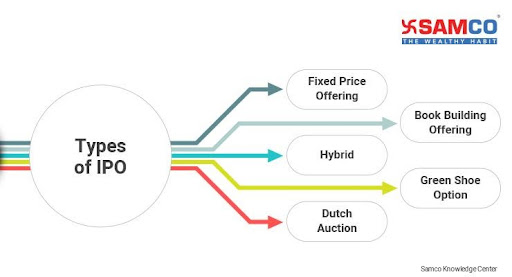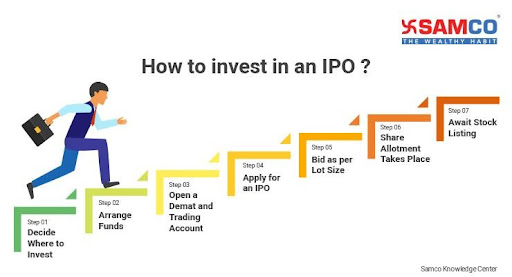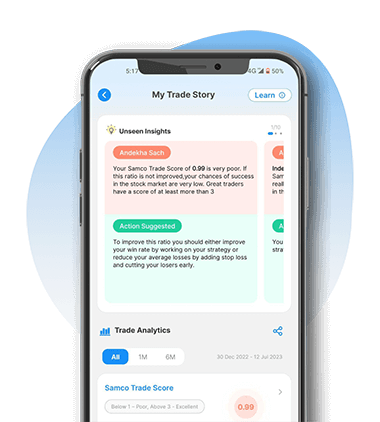What is IPO? Listen to What is IPO Summary here
In this article:
- What is IPO?
- IPO Process
- Grey Market IPO
- What is Grey Market Premium?
- What is IPO Kostak Rate?
- What is Subject to Sauda?
- Investing in an IPO
- Why Does a Company Offer an IPO?
- Are IPO Investments Risky?
What is IPO?
The full form of IPO is Initial Public Offering. In an IPO, a privately owned company decides to go public. It is a process where the shares are listed on the stock exchanges and the general public can easily trade in them. As these days the markets are flooded with upcoming IPOs, smart investors can make generous amount of money by diligently investing in them. Here is a list of ongoing and upcoming IPOs:Ongoing IPO
| IPO Name | Issue size | Price Band | Market Lot | Open Date | Close Date | Min Application Amount | Review |
| One 97 Communications Limited (PayTM IPO) | Rs.18,300 Cr | Rs. 2,080 – 2,150 per share | 6 shares | 8th November 2021 | 10th November 2021 | Rs 12,900 | |
| Sapphire Foods India Limited IPO | Rs 2,070 Cr | Rs. 1,120 to Rs. 1,180 per share | 12 shares | 9th Nov, 2021 | 11th November, 2021 | Rs. 13,440- Rs. 14,160 | NA |
| Latent View Analytics | Rs 600 crores | Rs. 190 to Rs. 197 per share | 76 shares | Nov 10, 2021 | Nov 12, 2021 | ₹14,972 | NA |
Upcoming IPOs in 2021
| Adani Wilmar | Utkarsh Small Finance Bank | Life Insurance Corporation of India Ltd. | ESAF Small Finance Bank Ltd |
| PharmEasy | Fincare Small Finance Bank | Pavan Hans | AnandRathi Wealth Management Ltd |
| Arohan Financial | Bajaj Energy Ltd | HDB Financial Services Ltd | Go Airlines |
| Mobikwik Ltd | Seven Islands Shipping |
IPO Process
Once a private company decides to go public, it begins with the process of IPO. The process usually takes nine months to a year. The following steps should give you a good idea of how the IPOs are listed on the stock exchanges.Step 1: Selecting an Investment Bank
The main motive of issuing an IPO is to raise the highest possible capital. The company approaches an investment bank which also acts as an underwriter. Who is an underwriter? Underwriter helps in the process of issuing shares. During this IPO process, investment bank gives suggestions to the company for a fee. They collect data to understand the financial situation of the company and suggests how much issue they will have to raise to meet their future plans. The underwriter can make two types of commitments with the company. Firm commitment is where the underwriter guarantees the company that a certain amount would be raised. The underwriter buys the shares from the company and sells it to their prospects. Best effort agreement is where the underwriter sells the securities for the company and but does not guarantee any amount to be raised. Both parties sign an underwriting agreement. This contract has all the details about the deal and the amount that will be raised by issuing shares. In case of large issues multiple investment banks are involved.Step 2: Registration with the Securities Exchange Board of India
During this phase, the company and the team of underwriters submit a draft to SEBI. This draft clarifies the reason why the company wants to raise money from the public. SEBI scrutinizes this report and does a background check on the company. If the data is compliant with the guidelines of SEBI, the draft is approved or else rejected.Step 3: Red Herring Prospectus is Prepared
While awaiting approval from SEBI, a preliminary draft is prepared by the underwriters. It consists details about the company like,- Financial statements
- Management background
- Legal issues of the company
- Insider holdings
- Proposed ticker symbol that the company will use at the stock exchange.
Step 4: Go on a Road Show
Before the IPO goes public, the executives of the company promote the IPO. They travel all around the country and spread the word about upcoming IPO to potential investors, mostly to qualified institutional buyers (QIB). The promotions that company does before the IPO is known as road show.Step 5: Type and Price of IPO is Decided

There are five types of IPOs for a company to choose from.
- Fixed Price Offering
- Book Building Offering
- Green Shoe Option
- Dutch Auction
- Hybrid Option
Step 6: Shares are Made Available to the Public
On the specified date, the company makes shares available to the public. These application process is kept open for three to five working days. Investors can fill out the IPO applications using the ASBA Process (application supported by a blocked amount). They can specify the price at which they wish to make the purchase and submit the application. If the application is a book building issue, then the retail investor must apply at the cut off price.Step 7: Issue Price is Decided & Share are Allotted
The underwriters wait till the subscription period is over. Later they discuss with the company and decide the price at which shares are to be allotted. This price would be determined by the demand of share and the price quoted by the applicants. Once the IPO allotment price is finalized, shares are allotted to investors.Step 8: Listing and Unblocking of Funds
The last step is the listing of shares on the stock exchanges. The investors who had subscribed to the IPO get the allotment of shares in their Demat account and equivalent amount is debited from their bank accounts. If the issue is oversubscribed, then shares are not allotted to all the applicants. The funds of investors are unblocked who do not receive an allotment. Ringing the Bell ceremony is held on listing day. This ceremony is conducted by the promoters of the company. It is a symbol which declares that the company is available for trading on the secondary markets.Grey Market IPO
Grey market is an unofficial market also known as dabba market. Here, individuals buy and sell IPO shares before they are listed on the stock exchanges. Grey market trading is done by a small set of individuals. It is an over the counter market and the transactions are settled on a cash basis. Trading in the grey market is risky and illegal. We strongly recommend investors to avoid trading in the grey market. Usually, investors test the demand of shares through the grey market for upcoming IPOs. Many investors refer to the grey market to analyse what could be the listing price of an upcoming IPO. The three most popular terms used in the IPO grey market are:- Grey Market Premium (GMP)
- Kostak rate
- Subject to Sauda
What is Grey Market Premium?
Grey market premium (GPM) is a premium amount at which IPO shares are traded above the issue price before listing. This premium can be positive or negative.Scenario 1: Positive Grey Market Premium
Suppose there is an upcoming IPO of BlueCherry Mobiles. Let’s assume the issue price for stock is Rs 200. If the grey market premium of BlueCherry is Rs 100, it means that people are ready to buy the shares of the company by giving Rs 100 more than the issue price. So the value of shares in the grey market is Rs 300 (100+200). This means grey market participants expect the stock to list at Rs 300 on the exchanges.Scenario 2: Negative Grey Market Premium
Suppose the grey market premium of BlueCherry Mobiles is Rs -50. The issue price of the share is Rs 200. Now since the grey market price is negative, it means that the IPO does not have high demand in the market and the investors are expecting it to list at discount. It is important to note that grey market premium keeps fluctuating with change in demand and supply of the IPO and also the overall market sentiments.What is IPO Kostak Rate?
IPO Kostak rate is the profit a seller makes by selling his IPO application in the grey market before listing of shares. This is usually done by investors who want to secure their profits before the listing day. The seller gets a fixed amount irrespective of getting an allotment. Let’s say someone applies for 1 lot (70 shares) of Bluecherry Mobiles and sells it to a buyer in grey market. The Kostak rate mutually agreed by them was Rs 750 per lot. The seller will get Rs 750 from the buyer irrespective of allotment. If shares are allotted, then the seller keeps Rs 750 plus his original investment amount of Rs 14,000 (200 *70). The buyer will keep the profits or bear the losses that may arise depending on where the stock lists.What is Subject to Sauda?
In the above example of kostak rate, the seller would get Rs 750 even if he does not get an allotment which is a risk to the buyer. Whereas, in subject to sauda, the buyer gets in an agreement with the seller that the decided premium amount will be paid only if the seller gets an allotment. Hence, the premium amount paid by the buyer is usually higher than kostak rate. Both, kostak and subject to sauda is usually done by the seller to lock-in the profit before the shares are listed on the exchange. Whereas, the buyer is quite positive about the issue and purchases the application to earn high listing gains. Recommended watch: Everything about grey market IPOInvesting in an IPO

- How to apply for Online IPO through ASBA using HDFC Bank?
- How to apply for Online IPO through ASBA using ICICI Bank?
- How to apply for IPO through ASBA using Kotak Bank?
- How to Apply for Online IPO through ASBA using SBI?
Listing of Stock
The shares are listed within 6 to7 days of bidding process on the stock exchanges. You are free to buy and sell the shares of the company in the secondary market. A lot of people apply in IPO’s only for listing gains.Why Does a Company Offer an IPO?
Let’s understand this with a simple example. Suppose you have recently started a company with a unique idea by introducing electric cycles and named it ‘Electro Racer Cycles’. To set up initial stores of Electro Racer Cycles, you decide to borrow money from banks. You must pay a pre-decided fixed interest on a monthly basis. After a few years, the idea of electric cycles becomes popular in major metro cities of India like Mumbai and Delhi. Hence, you decide to expand your business. But taking a loan will lead to more debt on your balance sheet. Hence, you approach professional investors and ask them to invest in your company. With rising pollution, the government also starts to promote electric vehicles. These investors find the idea unique and profitable and hence they decide to invest in your business. In return, they own a part of your company. These investors are known as Angel Investors or Venture Capitalists. This is how early-stage companies raise funds to grow their businesses. Before an IPO, a company is considered private. Raising money privately is helpful in the initial stages of the business. The company does not publicly disclose information. The management has tight control. It does not worry about market volatility. But this shield comes at a cost for its investors. It’s hard for angel investors and venture capitalists to exit from the company. IPO’s offers these investors an exit route. With an IPO a company goes public and a portion of its shares becomes available for trade on stock exchanges. The general public participates in the IPO’s and even trade in stocks once they are listed. From the story above we understand that companies issue IPOs for: 1. Raising Cheaper Capital for Business Raising capital is the primary motive of a company issuing an IPO. As we just saw, when a company raises capital from a bank it must pay interest on the amount borrowed. The general public become partial owners after listing. So they don’t receive any interests. Only profits are shared among the shareholders in the proportion of shares held by them. When profits are distributed to them it is known as dividends.-
-
-
-
-
- Dividend Pay-out
- Capital Appreciation (Rise in the share price)
-
-
-
-
Are IPO Investments Risky?
As we had discussed in the earlier example of an electro racer cycle, every company in its initial stage raises capital from venture capitalists and angel investors. They invest with the motive of making money when the business flourishes in the future. So IPO’s are a great way to liquidate a part of their holding and books profits. But generally it is observed that there is a significant decline in prices for two to three months after listing. This usually happens because IPO’s are generally priced at hefty valuations. Remember the job of investment banker is to raise as much capital as possible. Apart from this shares also see selling pressure once the lock in period expires. A lock in period is the duration for which the employees and the officials are not permitted to sell their shares. At the end of the lock in period these associates try to book profits by selling shares of the company. This leads to more supply and decline in stock prices. Investors who did not get the right opportunity to invest in the company can invest at this stage for the long term. So if you wish to invest in the company, it’s often best to wait before buying a company’s share that has recently gone public. Doing that gives time for the market to settle down. It also gives investors the benefit of seeing a few quarters of results. So if you are willing to take risk then you could invest in IPO’s for listing gains. But if you want to invest for the long term then we recommend to wait for a dip.Performance of Recent IPOs
| IPO Name | Offer price | Face value | Open date | Close date | Listing day(Gain/loss) | Review |
| PB Fintech Ltd | 940 | 2 | 01 Nov 2021 | 03 Nov 2021 | – | |
| Fino Payments Bank Ltd | 560 | 10 | 29 Oct 2021 | 02 Nov 2021 | – | NA |
| FSN E-Commerce Ventures Ltd | 1085 | 1 | 28 Oct 2021 | 01 Nov 2021 | – | |
| Aditya Birla Sun Life AMC Ltd | 712 | 5 | 29 Sep 2021 | 01 Oct 2021 | 0.42% | NA |
| Paras Defence And Space Technologies Ltd | 175 | 10 | 21 Sep 2021 | 23 Sep 2021 | 185% | NA |
| Sansera Engineering Ltd | 744 | 2 | 14 Sep 2021 | 16 Sep 2021 | 10.04% | NA |
| Vijaya Diagnostic Centre Ltd | 531 | 1 | 01 Sep 2021 | 03 Sep 2021 | 16.63% | NA |
| Ami Organics Ltd | 610 | 10 | 01 Sep 2021 | 03 Sep 2021 | 53.2% | NA |
| Chemplast Sanmar Ltd | 541 | 5 | 10 Aug 2021 | 12 Aug 2021 | -1.13% | NA |
| Aptus Value Housing Finance India Ltd | 353 | 2 | 10 Aug 2021 | 12 Aug 2021 | -1.84% | NA |
| Nuvoco Vistas Corporation Ltd | 570 | 10 | 09 Aug 2021 | 11 Aug 2021 | -6.79% | NA |
| Cartrade Tech Ltd | 1618 | 10 | 09 Aug 2021 | 11 Aug 2021 | -7.29% | |
| Windlas Biotech Ltd | 460 | 5 | 04 Aug 2021 | 06 Aug 2021 | -11.59% | NA |
| Devyani International Ltd | 90 | 1 | 04 Aug 2021 | 06 Aug 2021 | 37.06% | NA |
| Krsnaa Diagnostics Ltd | 954 | 5 | 04 Aug 2021 | 06 Aug 2021 | 3.85% | NA |
| Exxaro Tiles Ltd | 120 | 10 | 04 Aug 2021 | 06 Aug 2021 | 10.21% | NA |
| Rolex Rings Ltd | 900 | 10 | 28 Jul 2021 | 30 Jul 2021 | 29.62% | NA |
| Glenmark Life Sciences Ltd | 720 | 2 | 27 Jul 2021 | 29 Jul 2021 | 3.92% | |
| Tatva Chintan Pharma Chem Ltd | 1083 | 10 | 16 Jul 2021 | 20 Jul 2021 | 113.32% | NA |
| Zomato Ltd | 76 | 1 | 14 Jul 2021 | 16 Jul 2021 | 65.59% | |
| Clean Science & Technology Ltd | 880 | 1 | 07 Jul 2021 | 09 Jul 2021 | – | |
| GR Infraprojects Ltd | 828 | 5 | 07 Jul 2021 | 09 Jul 2021 | – | |
| Dodla Dairy Limited | 428 | 10 | 16 Jun 2021 | 18 Jun 2021 | 42.31% | NA |
| Krishna Institute of Medical Sciences Limited | 825 | 10 | 16 Jun 2021 | 18 Jun 2021 | 20.72% | |
| Shyam Metalics and Energy Limited | 306 | 10 | 14 Jun 2021 | 16 Jun 2021 | 22.83% | NA |
| Sona BLW Precision Forgings Limited | 291 | 10 | 14 Jun 2021 | 16 Jun 2021 | 24.69% | |
| Powergrid Infrastructure Investment Trust | 100 | 100 | 29 Apr 2021 | 03 May 2021 | 2.98% | NA |
| Macrotech Developers Ltd. | 486 | 10 | 7th April 2021 | 9th April 2021 | -4.7% | |
| Barbeque-Nation Hospitality Ltd | 498 | 5 | 24 Mar 2021 | 26 Mar 2021 | 18.08% | |
| Nazara Technologies Ltd | 1101 | 4 | 17 Mar 2021 | 19 Mar 2021 | 81% | |
| Suryoday Small Finance Bank Ltd | 305 | 10 | 17 Mar 2021 | 19 Mar 2021 | -9.44% | |
| Kalyan Jewellers India Ltd | 87 | 10 | 16 Mar 2021 | 18 Mar 2021 | -13.45% | |
| Anupam Rasayan India Ltd | 555 | 10 | 12 Mar 2021 | 16 Mar 2021 | -5.24% | |
| Easy Trip Planners Ltd | 187 | 2 | 08 Mar 2021 | 10 Mar 2021 | 11.39% | NA |
| MTAR Technologies Ltd | 575 | 10 | 03 Mar 2021 | 05 Mar 2021 | 88.22% | |
| Heranba Industries Ltd | 627 | 10 | 23 Feb 2021 | 25 Feb 2021 | 29.55% | |
| Railtel Corporation Of India Ltd | 94 | 10 | 16 Feb 2021 | 18 Feb 2021 | 29.15% | |
| Nureca Ltd | 400 | 10 | 15 Feb 2021 | 17 Feb 2021 | 66.66% | NA |
| Stove Kraft Ltd | 385 | 10 | 25 Jan 2021 | 28 Jan 2021 | 15.83% | NA |
| Indigo Paints Ltd | 1490 | 10 | 20 Jan 2021 | 22 Jan 2021 | 109.31% | |
| Indian Railway Finance Corporation Ltd | 26 | 10 | 18 Jan 2021 | 20 Jan 2021 | -4.42% | |






Leave A Comment?